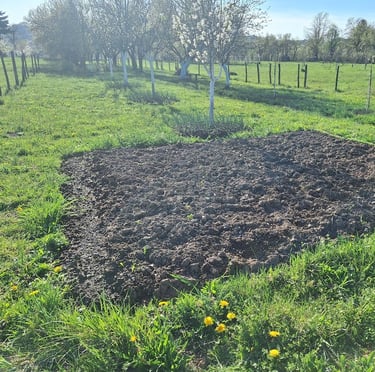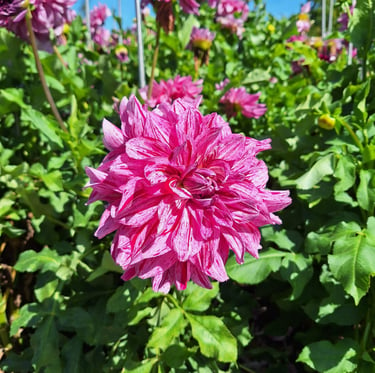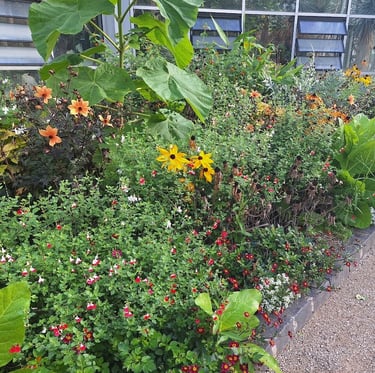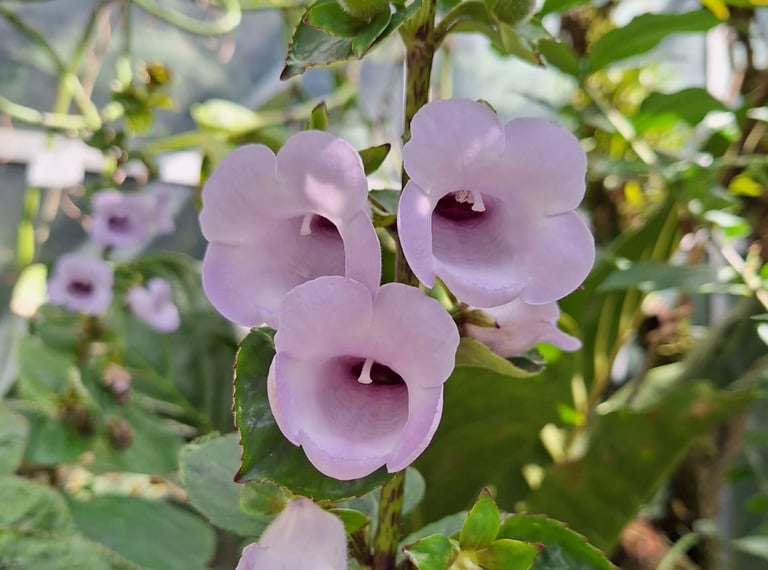A Beginner's Guide to Gardening for Seniors
If you are a senior and are looking to get into gardening, congrats! Gardening is more than just a way to pass the time, staying in your garden and being outside is a habit that can dramatically improve your overall well-being. So in this simple and actionable article we will teach you how you dan start growing your first few crops.






Why Gardening Is Great for Seniors
Gardening is fantastic for your brain. Planning your garden, learning about different plants, and solving small problems keeps your mind sharp and engaged. You can garden with friends, join a community garden, or simply share your new hobby with family.
This habit involves low-impact activities like potting, watering, and weeding, which help improve strength and flexibility without putting strain on your joints. Whether you have a spacious backyard or a small balcony, you can do gardening in a way that it will fit your mobility level and living space perfectly.


Choosing the Right Type of Garden
The first step is deciding what kind of garden works for you. Here are some fun gardening projects for seniors:
Raised Bed Gardens
Raised garden beds are a fantastic choice, especially if bending or kneeling is a challenge. These are essentially garden boxes filled with soil that sit above the ground. You can build them or buy kits in various heights, making them much easier to access than a traditional garden plot. They also offer excellent drainage and can help keep weeds under control.
Container Gardening
If you have a patio, balcony, or even just a sunny windowsill, container gardening is your new best friend. You can grow almost anything in pots, from colorful flowers and fragrant herbs to vegetables like tomatoes and peppers. This approach gives you total flexibility, since you can move your pots around to catch the sun and bring them indoors if the weather gets too cold.
Vertical Gardens
Working with a small space? Think up, not across! Vertical gardens use wall-mounted planters or stacked containers to grow plants upward. They’re a clever way to maximize your growing area and can turn a plain wall into a living work of art. They are perfect for growing herbs, lettuces, and trailing flowers.
Essential Tools and Safety Tips
Having the right tools will make your gardening experience much more enjoyable. You don’t need a shed full of equipment, just a few key items to help you get started.
Opt for lightweight tools, like hand trowels, cultivators, and pruning shears, with ergonomic handles. These are designed to reduce strain on your hands and wrists.
Remember to protect yourself from the sun by wearing a wide-brimmed hat, sunglasses, and sunscreen.
If you need to kneel, use a comfortable kneeling pad or a small gardening stool. It’s also a smart idea to create a shaded seating area where you can take regular breaks and simply enjoy the view of your growing garden.





Easy Plants and Herbs to Start With
As a beginner, you’ll want to start with plants that are forgiving and don’t require a lot of fuss. Here are a few easy-to-grow options:
Cherry Tomatoes: These are incredibly rewarding to grow in containers or raised beds. They produce a lot of fruit and taste so much better than what you’ll find at the store.
Basil: This fragrant herb is simple to grow in a pot on your windowsill. You can pluck leaves as needed to add fresh flavor to your meals.
Lavender: This plant is a hardy plant that thrives in sunny spots. Its beautiful purple flowers attract bees and butterflies.
Marigolds: These cheerful annual flowers are incredibly low-maintenance and are great for adding a pop of color to your garden. They also naturally deter pests.
Lettuce and Spinach: Perfect for container gardens, these leafy greens grow quickly and can be harvested multiple times.
Gardening for Limited Mobility or Wheelchair Users
Gardening is truly for everyone, and there are many ways to adapt it for limited mobility or for those who use a wheelchair. Waist-high planters and gardening tables are excellent solutions, as they bring the garden up to a comfortable height, eliminating the need to bend or kneel.
You can also find a wide range of adaptive gardening tools with long handles or specialized grips that make them easier to use from a seated position. Using a stool or a rolling garden seat can also provide comfort and support while you work.
Creating a Routine and Enjoying the Process
The best way to stick with gardening is to make it an enjoyable part of your routine. You don’t need to spend hours in the garden every day. Even 15 to 20 minutes a few times a week can make a big difference.
Set a simple schedule for tasks like watering, but be flexible. Some days you might just want to sit and enjoy the beauty you’ve created. Pay attention to the little changes, like a new leaf unfurling or the first flower bud appearing. The goal is to find joy in the process of nurturing life.
Your Green Thumb Awaits
Gardening is a fulfilling journey that offers endless rewards for your body and mind. It’s a chance to connect with the natural world, create beauty, and enjoy the simple pleasure of watching something grow.
Why not take the first step today? You can start small, perhaps with a single pot of herbs on your kitchen windowsill.
With a few thoughtful adaptations and a bit of patience, you’ll find that gardening is an accessible and joyful activity at any age.












FAQs
How does sunlight during gardening help seniors?
Sun exposure during gardening boosts vitamin D synthesis, crucial for calcium absorption and bone health. This helps reduce osteoporosis risk and supports immune function. Seniors should balance sun time with sunscreen to protect skin. Gardening gets seniors outdoors, improving overall vitamin D levels naturally.
What ergonomic garden tools benefit seniors with arthritis?
Lightweight tools with padded, ergonomic handles reduce wrist strain. Long-handled tools limit bending and kneeling. Adaptive grips and cushioned stools further enhance comfort for those with arthritis or grip issues. Tools designed specifically for senior use improve ease and reduce injury risk during gardening.
Can gardening help maintain bone density?
Yes. Weight-bearing activities in gardening like digging and planting help improve bone density by stimulating bone remodeling, similar to mild exercise. This reduces fracture risk and supports musculoskeletal health, especially in seniors at risk of osteoporosis.
How does gardening improve cardiovascular health?
Gardening involves moderate physical activity, helping regulate blood pressure and heart rate. The calming nature reduces stress, which positively impacts cardiovascular function. Regular gardening can contribute to weight management and better circulation, lowering heart disease risk.
Are community gardens beneficial for seniors?
Yes. Community gardening fosters social connections, reduces feelings of isolation, and provides emotional support. Working alongside peers increases motivation and adherence to gardening routines, improving mental well-being and quality of life for seniors.
Sources
Nature and Sustainability uses only high-quality sources, including peer-reviewed studies, to support the facts we describe in our articles. Please read our editorial policy to learn more about how we keep our content accurate, reliable, and trustworthy.
General information and facts: In-Ground Vegetable Garden | Bonnie Plants, 25 Vegetables That Are Easy to Grow (thespruce.com), Vertical Gardening | The Old Farmer's Almanac, How to start a container garden (nationalgeographic.com)
Grdening with limited mobility: Gardening in a weelchair (thrive.org.uk), Ways to make gardening more accessible if youre a wheelchair user
Gardening and physical and mental health: Gardening for health: a regular dose of gardening (pmc.ncbi.nlm.nih.gov), 10 Mental Health Benefits of Gardening (Psychology Today)
Garden plants: Your Season-by-Season Guide to Effective Garden Watering (bhg.com), Best Practices for Watering Yards and Gardens – Wisconsin Horticulture, Water Recommendations for Vegetables | USU
Share this article:




Article By:
Calin has been passionate about gardening for over ten years, building deep expertise in plants and gardening techniques. He is the founder of this website and is responsible for about half of the content and photos.


Helga has been fascinated with plants since childhood and is an avid gardening specialist who grows various plants. She has reviews and fact-checks multiple articles on this website.

